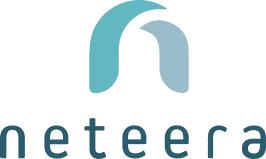The dip & rise in patient engagement
New disruptive technologies are redefining the way healthcare is approached. Moreover, the COVID-19 pandemic has expedited the development and adoption of digital health which is here to stay. In fact, health app usage skyrocketed by 2,000% at the beginning of COVID. In addition, according to the Department of Health and Human Services (HHS), 43.5% of Medicare primary care visits were provided through telehealth compared with 0.1% prior to the public health emergency. With virtual care on the rise, so too is patient engagement – the active involvement in one’s health and wellbeing. Patient engagement benefits all: it aids the diffusion of medical health information to healthcare providers, enabling a complete and comprehensive take on the patient’s wellbeing, and decreases health costs.
Patient engagement is certainly a current buzzword. The plethora of available health apps, and the endless accessibility of wearable devices in the market make it attractive for individuals to be connected to their health state. Indeed, there are over 400,000 health apps currently available and some 200 new apps are added daily. The market for health trackers, smart watches and other wearables is continuously on the rise.
Consumer digital devices and apps are one thing, medical/healthcare digital devices are a different ball game. Home-based or remote medical devices should be as easy to use as a wi-fi connected AC unit. Unfortunately, that is not the case, e-health solutions are not easily deployed. Prior COVID, consumer adoption of health apps dipped from 48% to 35% in 2020 compared to 2018, while that of wearable devices decreased from 33% to 18%. With limited physical access to health institutions, the pandemic forced healthcare to go digital, and shifted patient behavior virtually overnight.
Friction generators
Lessons must thus be learned as we are (hopefully) entering the post-pandemic era. What are the major concerns in digital health adoption, and how does the industry maintain the surge? Friction points in the health ecosystem are manifested at numerous levels and include technology ease of use and operational challenges. The lower the friction, the higher the adoption of the technology, and the greater patients will engage. As a result of the pandemic, 60% of patients plan to adhere to telehealth. However, only 44% of patients were introduced to new technology to manage their health condition remotely. With patient care moving at a rapid pace to the comfort of one’s home, it is imperative to introduce seamless and easy-to-use technology.
Remote patient monitoring (RPM) requires the deployment of a device. Wearables, such as heart rate sensors, trackers, and oximeters, provide real-time information to patients, enabling self-care but are also the source of friction generation. Requesting patients to handle devices is counterintuitive in the long run, since it requires them to be physically connected, thus limiting comfort and the ability to move freely. In addition, many home devices used today have a challenging user interface to implement, which also negatively influences patient adoption.
Neteera = zero friction = 100% patient engagement
IoT and AI-based technologies are disrupting healthcare, but they also need to empower the patient, not only the care provider. Friction is indeed subjective – we tend to forget who will use the device and instead focus on what the technology will provide.
Neteera is reinventing the way patients are monitored, and their data analyzed. Our sensing platform allows for continuous monitoring of vital signs and physiological parameters without contact, removal of clothing or caregiver presence. Patient data is stored in the cloud for caregiver access and analysis of current and historical data.
Seamless and continuous patient monitoring, with no patient involvement is a long sought-after solution that will significantly simplify understanding of patient status, improve prognosis, and reduce patient stress levels and cost. Our solution involves a simple one-time set-up and straightforward data display. Patients are thus able to freely engage in their health state, while providers can monitor and be informed in any status change, thereby providing a long-awaited continuum of personalized care.


